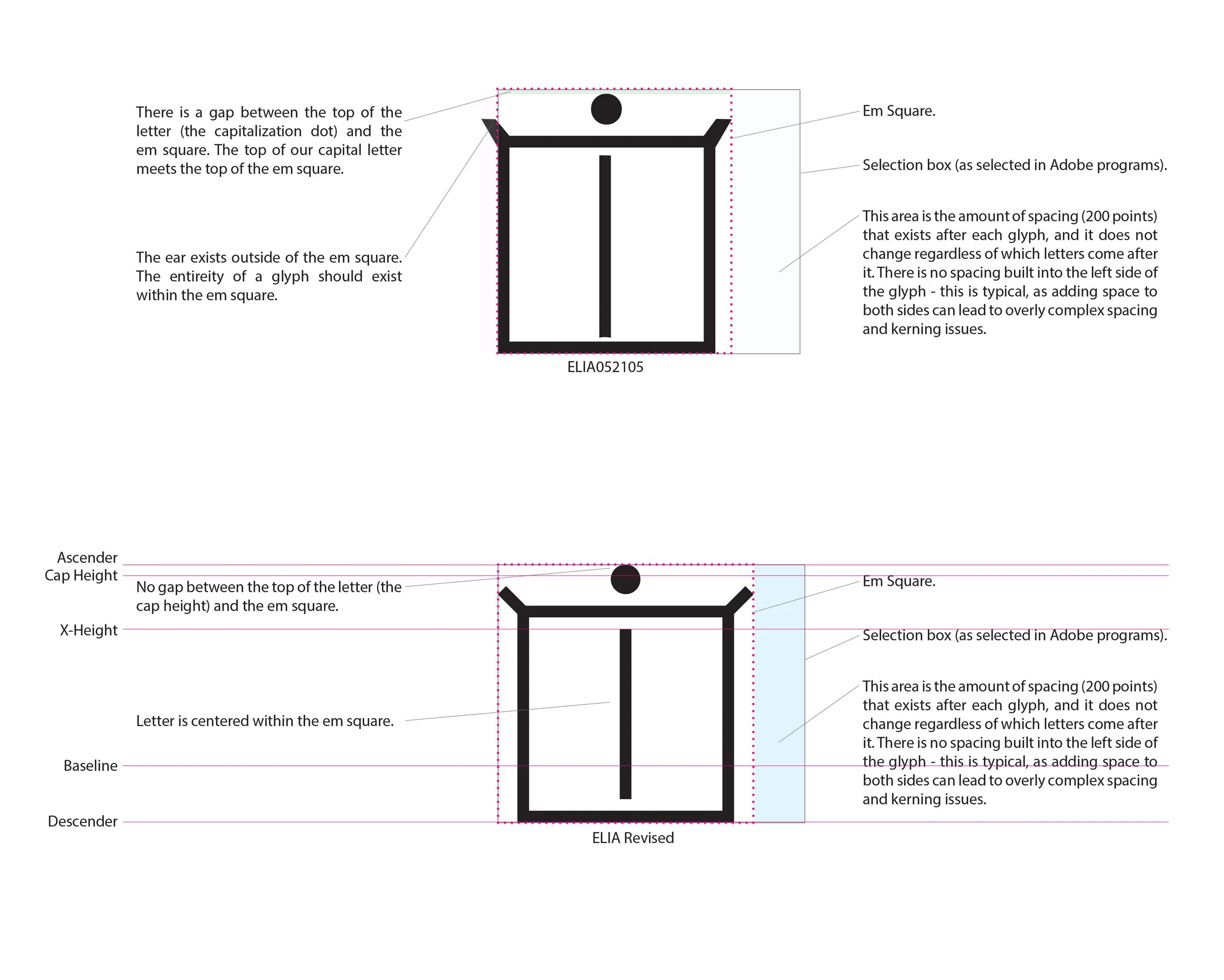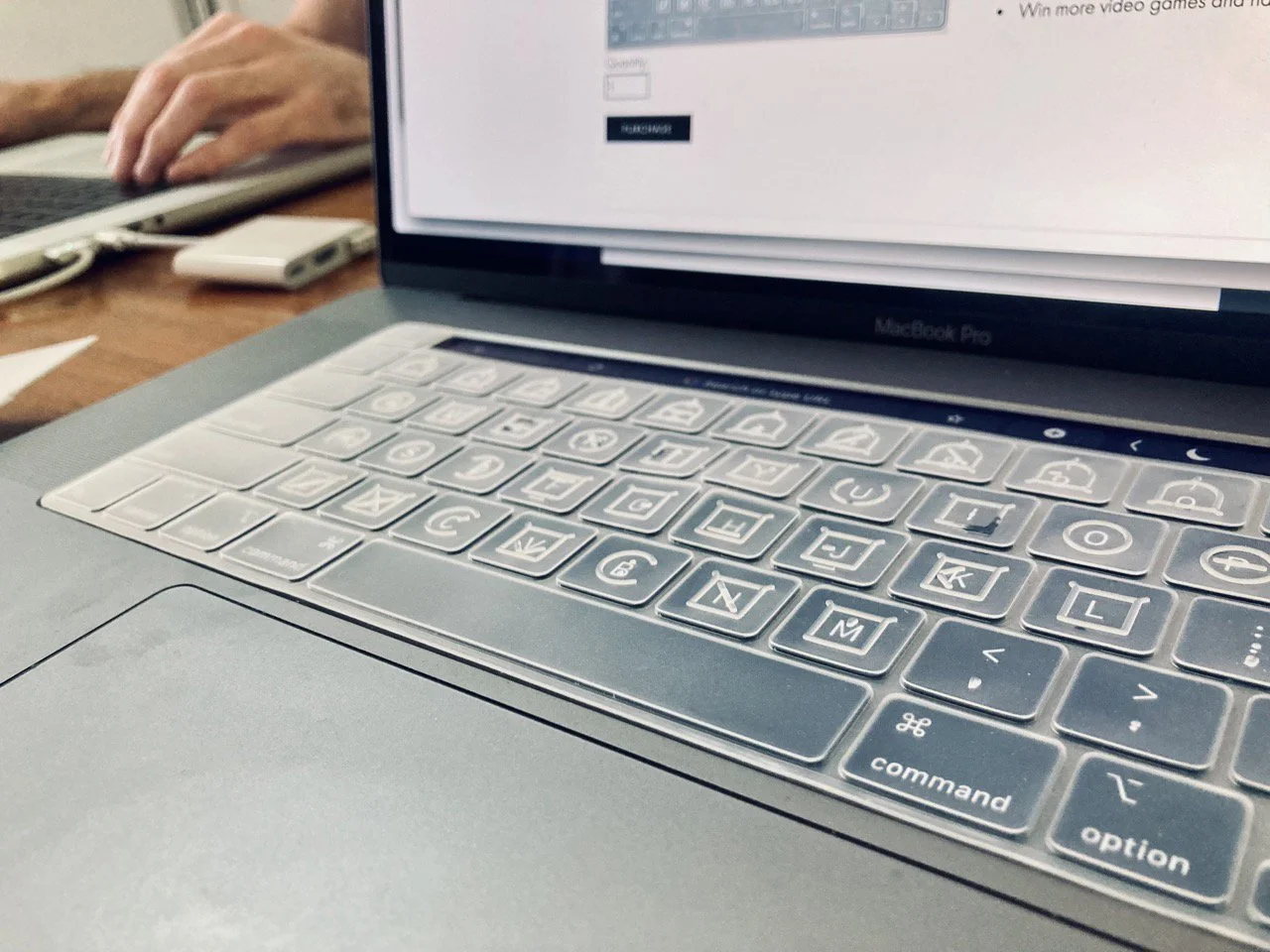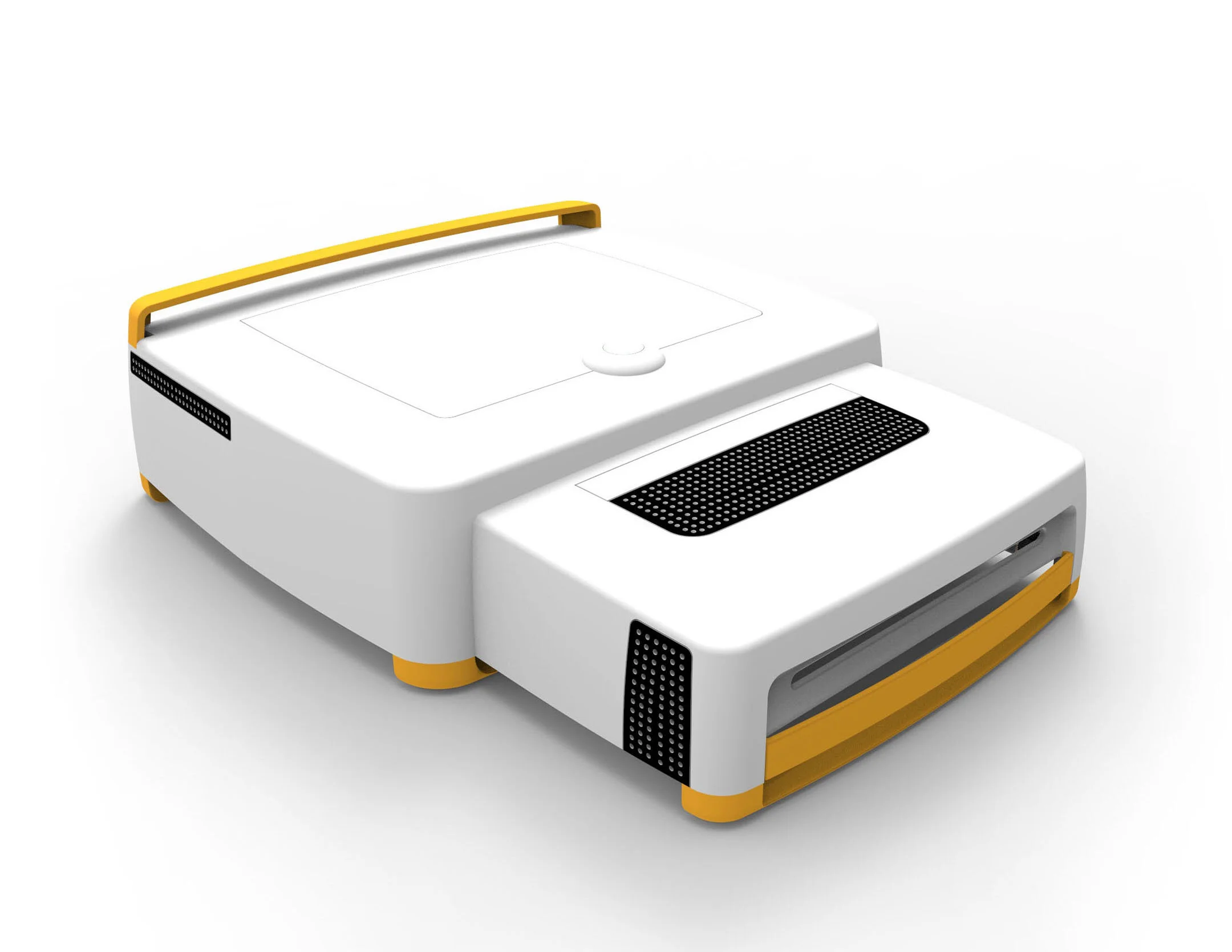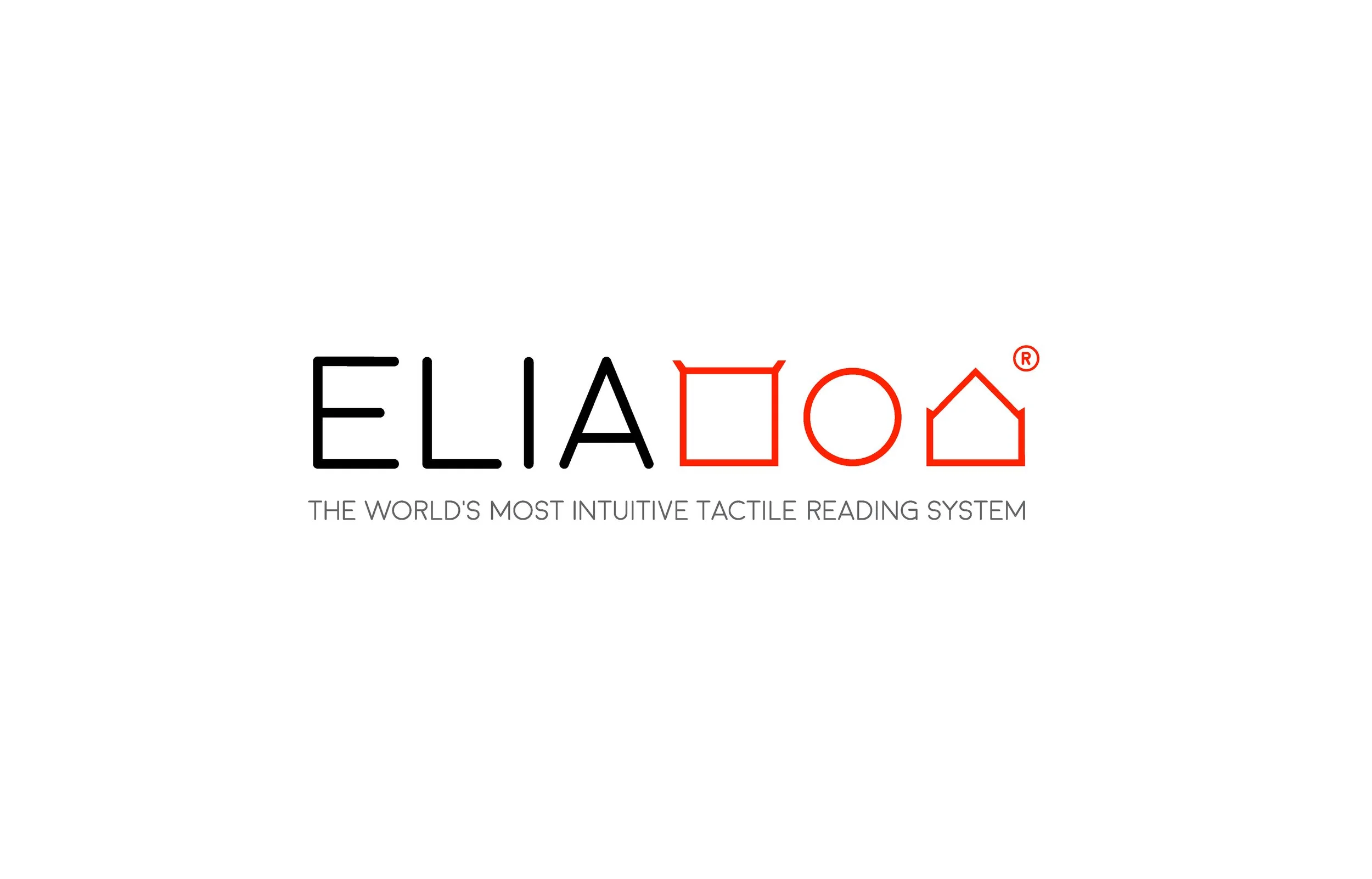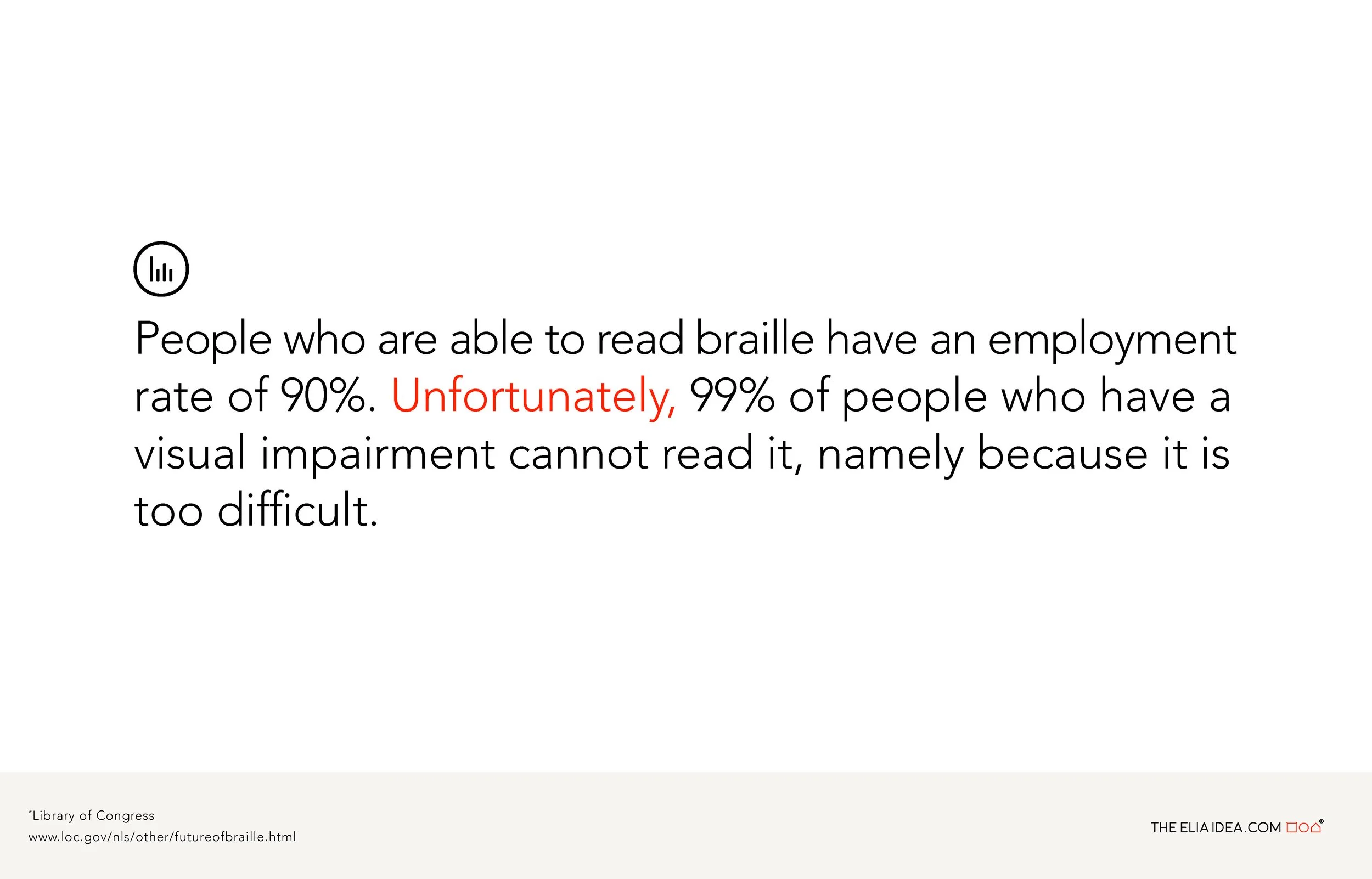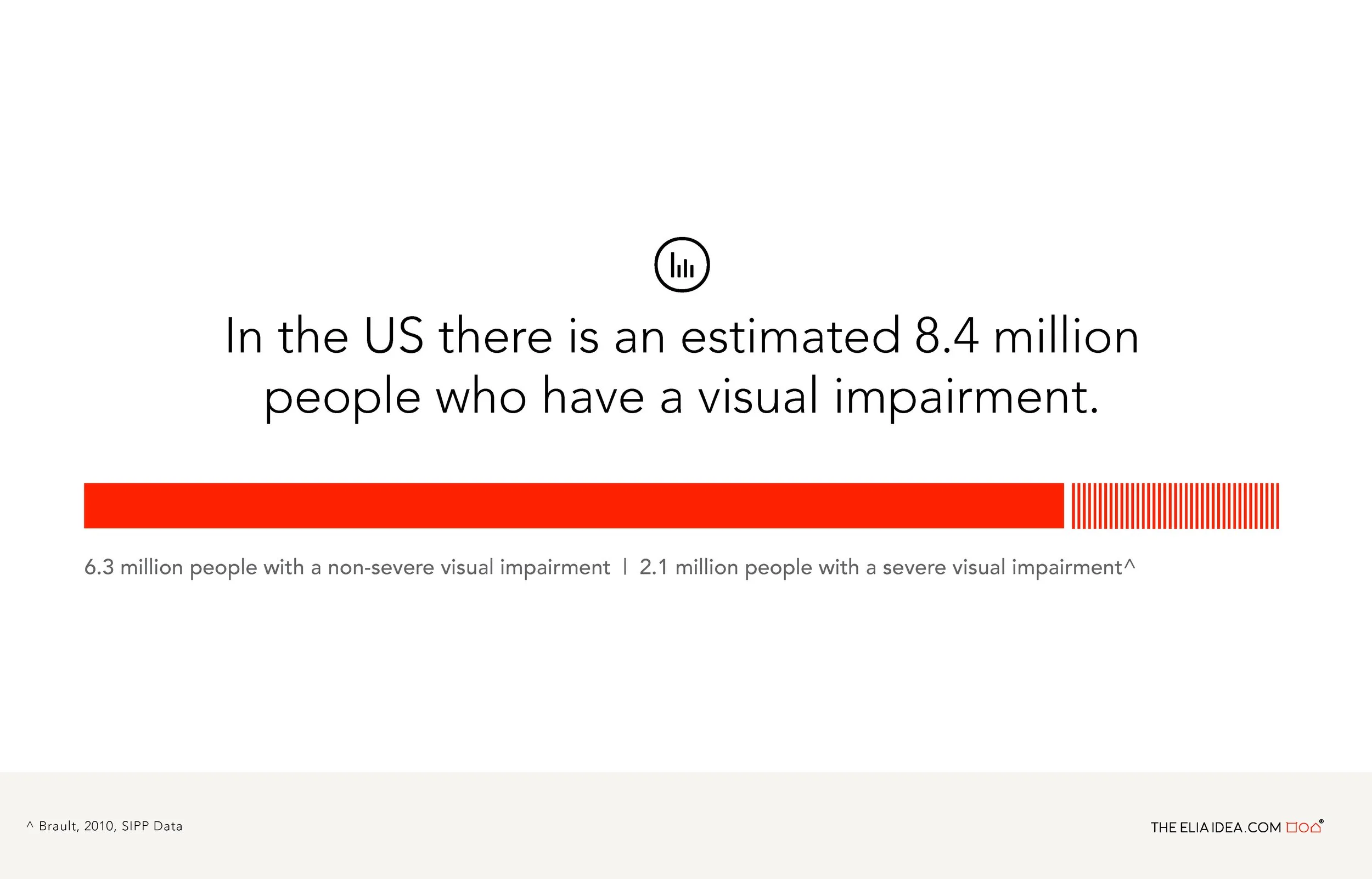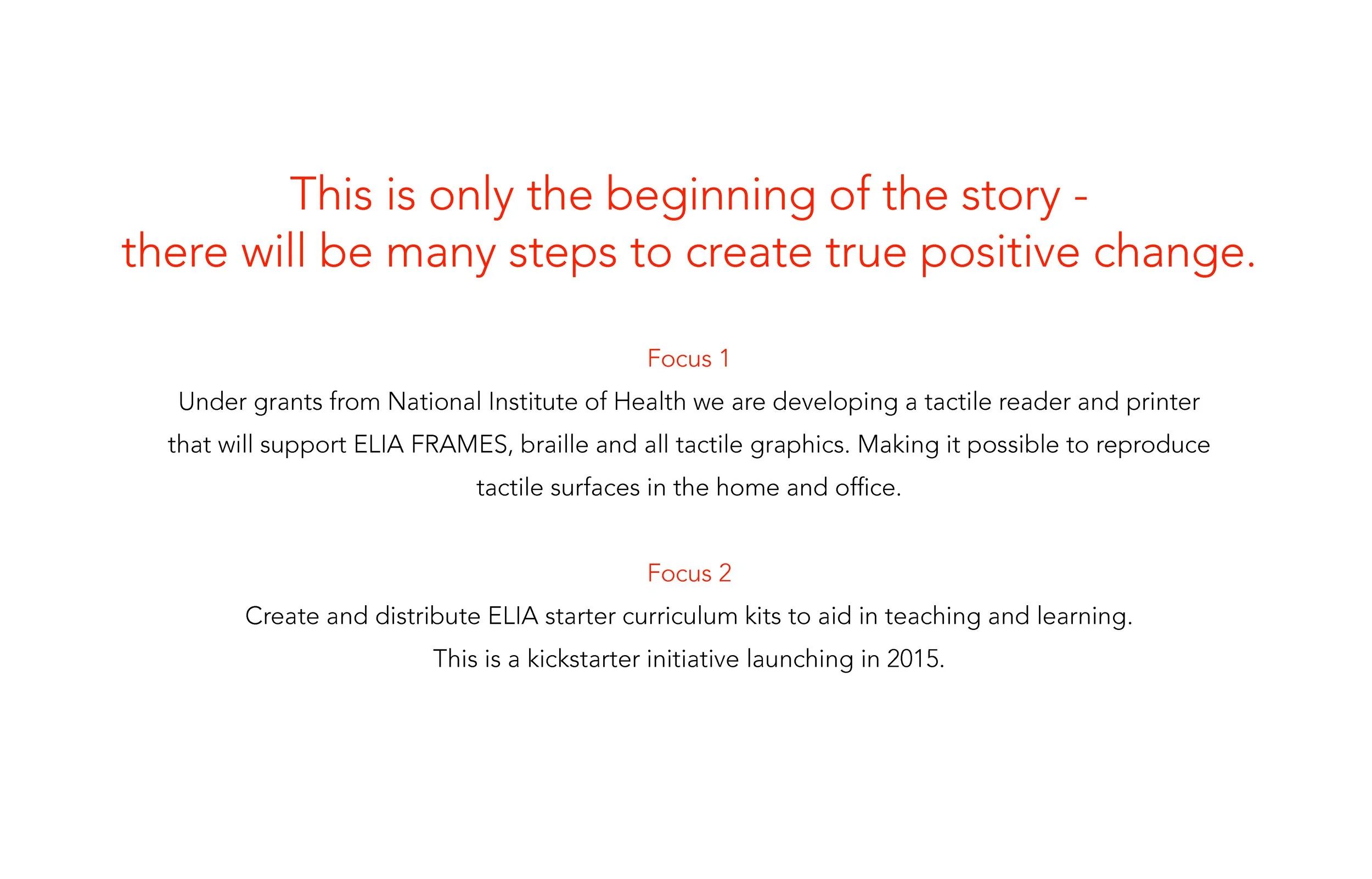
99% of people who have a visual impairment cannot read braille.
ELIA Life Technologies
Independence Through Literacy
ELIA Life Technology spent the last 12 years developing a new tactile alphabet for the blind that can be learned, read, and retained eight times more efficiently than braille. Once this revolutionary alphabet was validated, ELIA then partnered with Humanfactors to develop a series of assistive products that will deliver the tactile ELIA alphabet to the visually impaired, enabling independence through literacy. Based on this unique working relationship, Humanfactors has provided not only design, engineering, prototyping, and software development services, but has also helped ELIA write, win, and execute grants from NIST, NSF, and NIH in order to help sustain research and development.
Learn more about ELIA Frames
Literacy declines as vision degrades. Less than 1% of the blind and low-vision population successfully learn to read braille.
The Font
The Library of Congress minimum braille height is half a millimeter, but those are merely dots. ELIA letters have features that, when fabricated in 3 dimensions, risk moldability and cleanability issues in assistive products, kerning and leading issues for legibility, dimensional considerations when formatting pages of text, the tactile acuity of internal and external letter features, and other challenges. Hundreds of glyph designs and as many user-study participants have produced a tactile alphabet that can be learned in a fraction of the time it takes to achieve braille competency, and ELIA provides the advantage of also being easily read by sighted users.
Tactile Keyboard
If you’re a touch typist, the overlay will sharpen your ELIA letter recognition. If you’ve learned the ELIA tactile alphabet, the overlay will enable you to identify keys during touch-type learning exercises.
Multiple iterations were explored in this product’s development, from removable, sticky-backed individual keycaps to a more encapsulating key-hugging shroud.
The overlay material had to be thin enough to flex during use, with enough height on the letters to ensure legibility. The overlay fits a variety of Mac keyboards and its flexibility permits plenty of margin for other manufacturers.
Tactile Printer
Humanfactors helped ELIA establish an exclusive partnership with Hewlett Packard, giving ELIA sole rights to integrate an inkjet printer that serves as the foundation of the world’s first integrated tactile printer. Current, similar devices require users to first print onto swell paper (a special paper whereby inkjet-printed areas are made tactile when special heat/light is applied), then load the paper into what is a poorly modulated oven that under/overcooks the page - a cumbersome, lengthy process yielding uneven results, made more dangerous if the user is vision impaired. ELIA’s TouchPrinter enables the user to simply load paper, hit print, and retrieve their tactile page at the other end, a process virtually identical to using a typical inkjet printer, meaning its operation is intuitive and simple for any user.
Tactile Display
Our first collaboration with ELIA focused on developing a refreshable, tactile display, where a dense array of pins can be elevated to depict tactile, legible information (e.g. the ELIA alphabet or braille) for BLV (blind/low vision) users. enabling them to read at a more natural pace. An unusual, complex piece of technology - sort of like a typewriter meeting a smartphone - multiple grants focused on developing a reliable elevating and locking mechanism for the pins, and integrating sensors to improve readability and the overall user experience. Within just a few months, Humanfactors had a proof-of-principle, fully functioning prototype.
User Needs
This presentation elucidates some of the issues and inspirations behind the development of the ELIA alphabet and its ecosystem of products that support its adoption and literacy.
Learn more about ELIA Frames
Literacy declines as vision degrades. Less than 1% of the blind and low-vision population successfully learn to read braille.


